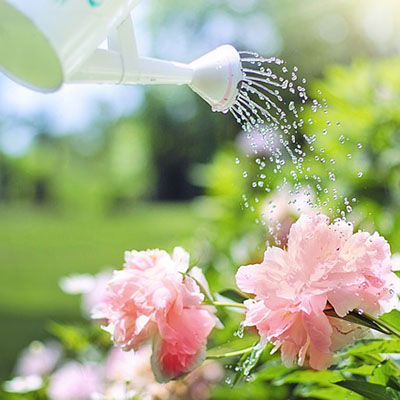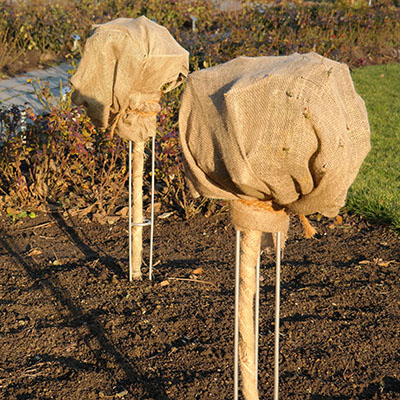Beautiful plants that thrive in Florida’s subtropical climate often suffer damage during brief periods of icy weather, unless they have sufficient winter plant protection. Planting a generous number of plants that stand up well to winter can help your landscaping withstand the occasional cold snap, with minimal protection of plants required. With winter in mind, plant tropical plant varieties to the south and east of your home, so that the house acts as a barrier against cold coming in from the west or northwest. Cold-hardy hedges and fences also serve as good buffers against frigid winds.
When weather reports warn of freezing temperatures, it is essential to protect the tender plants that need to be covered. Learn more below about winter plant protection in Florida.
 Before a night with an overnight low of 30 to 40 degrees and cold winds, water your plants. This can help because if plants are too dry, the drying winds will cause even more damage to cold-sensitive plants. Also, water early in the day. This helps to warm the soil and helps plants to survive the freezing cold night.
Before a night with an overnight low of 30 to 40 degrees and cold winds, water your plants. This can help because if plants are too dry, the drying winds will cause even more damage to cold-sensitive plants. Also, water early in the day. This helps to warm the soil and helps plants to survive the freezing cold night.
Flowers and plants inside pots and containers should be brought inside the garage or your home. If they must necessarily be left outside, you can reduce loss of heat by pushing the plants close together. Once things get warmer, it’s important to separate the plants again. If they are left together for very long, leaves could be damaged.
The reason plants sensitive to cold need to be covered is to protect them from frost and cold, in general. The best covers are frost cloths, the type you get from home centers and nurseries. It is thick insulated material. Thick blankets or quilts serve as suitable substitutes.
The frost cloth or blanket should cover small plants and shrubs all the way to the ground. If possible, secure the covering with bricks or rocks all around the base of a plant, to capture the warmth of the soil and to prevent the covering from blowing off. In the morning, remove the plant coverings.
Please note: Do not use plastic to cover plants because the material isn’t breathable. Plastic will do more harm than good because it actually creates colder air underneath it than the air outside. Water droplets from condensation will burn the leaves.
 For a young or small palm, secure the fronds by tying them up and wrap the “head” with a blanket, a few layers of burlap, or frost cloth. On small palms, wrap the entire head.
For a young or small palm, secure the fronds by tying them up and wrap the “head” with a blanket, a few layers of burlap, or frost cloth. On small palms, wrap the entire head.
If it’s possible, try not to let the cover come into direct contact with leaves because it can cause them to turn brown. Add a covering, even if you can’t prevent the contact because contact is better than failing to provide winter plant protection of any kind.
Once freezing temperatures have passed and the weather has warmed up some, be sure you remove the covers. Plants need to get light and air as quickly as possible, after being wrapped for cold weather. Check shrubs and plants to see if they need watering. Water right away, if needed. The ground and container soil could still be frozen, and watering should help thaw it out.
When warm temperatures return, new growth should appear wherever brown leaves have fallen off. You can remove brown leaves by hand, if desired.
All the work you’ve put into your landscaping doesn’t have to be for naught during a cold winter. These Florida winter plant protection tips can help to ensure that all of your flowers, shrubs, and other cold-sensitive plants survive freezing temperatures.